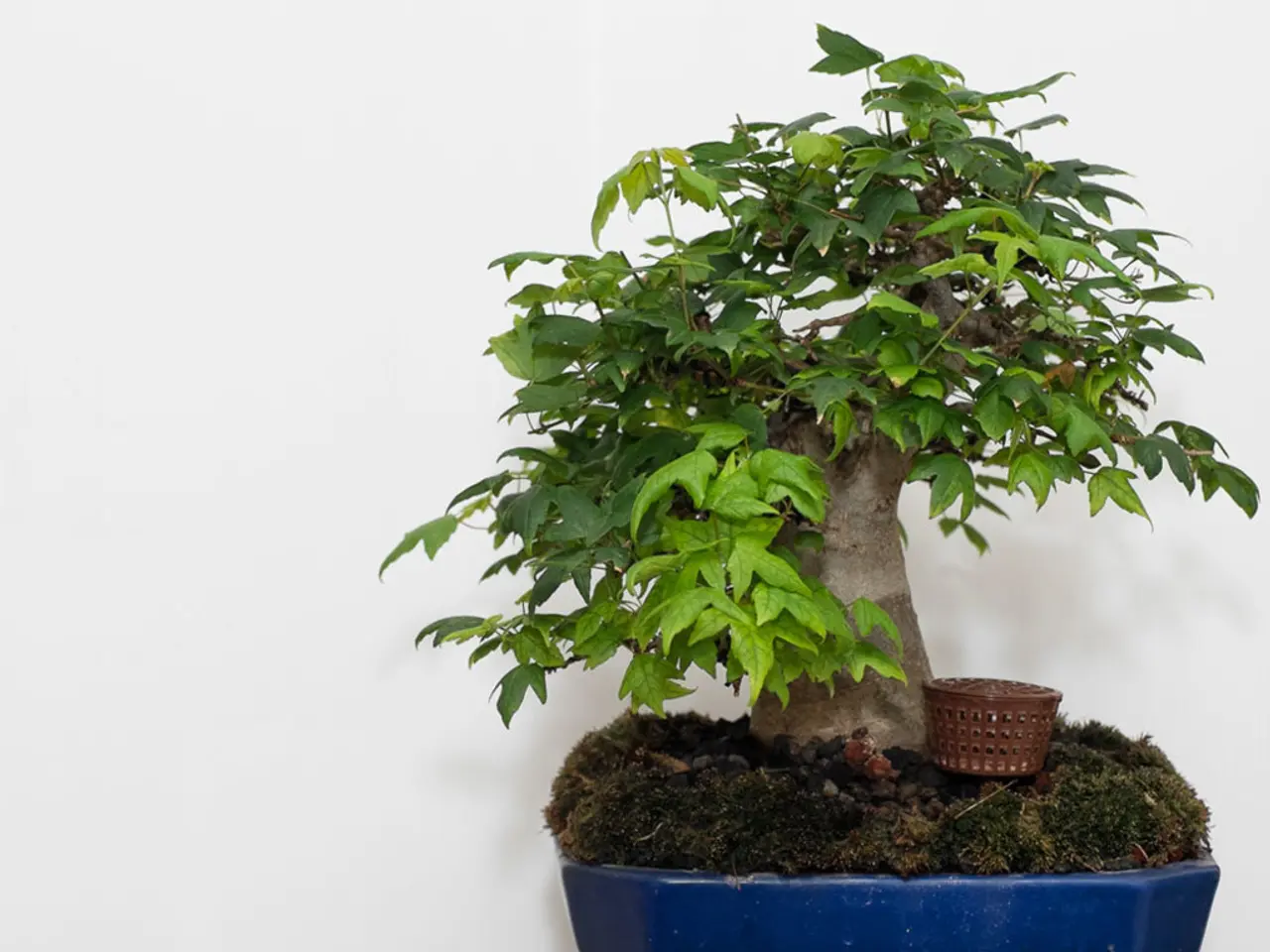Mastering the Art of Slanted Bonsai: Strategies for Dramatic and Visually Striking Trees
Creating a Dynamic Slanting Bonsai: A Guide to the Sagan/Shakan Style
The Slanting bonsai, also known as Sagan or Shakan style, is a captivating art form that embodies the dynamic forces of nature. This style showcases a tree that appears to have been windswept or grown on a hillside, with a well-defined, sinuous curve that exudes a sense of fluidity, balance, and visual equilibrium.
Key Steps
To create a Slanting bonsai, the first step is to select the right tree species. Trees that are naturally tolerant of winds or slopes, such as Premna, Juniper, Pine, and Swamp Cypress, adapt well to this style. Species with flexible branches and good ramification ability are ideal for achieving natural curves.
The defining feature of a Slanting bonsai is a trunk that slants markedly to one side, mimicking trees found on slopes or coastal areas. This slant creates a sense of dynamic instability visually. Use wiring techniques to guide the trunk and branches into natural curves and slanting angles. Prune to balance the tree visually, ensuring powerful roots appear to anchor the angled trunk firmly.
Developing strong, well-distributed roots is crucial for enhancing the impression of stability despite the slanted trunk. Pots should harmonize with the tree's shape, often working well in pots that highlight its asymmetry but maintain overall harmony, such as oval or slightly rounded rectangular pots.
Aesthetic Considerations
A Slanting bonsai should achieve a balance between apparent motion and stability. Though the trunk leans, the visual weight of the roots, trunk base, and branch distribution should convey grounded strength. Branches should grow in harmony with the trunk’s angle, sometimes growing slightly opposite or parallel to the lean to enhance dynamic tension.
Avoid making the tree look top-heavy or precarious; the goal is naturalism and the impression of resilience under environmental pressure. Consider the display angle carefully to showcase the slant and flow of the trunk and branches.
Caring for Your Slanting Bonsai
When watering a slanting bonsai, check the soil daily to prevent root rot, as the tilted position can cause water to drain unevenly. With patience, skill, and a deep understanding of the tree's natural growth patterns and responses to pruning and training, a million possibilities await in creating a slanting bonsai from a tree with a straight trunk.
By thoughtfully arranging branches and managing foliage density, a sense of balance and harmony is created along the leaning trunk in Slanting bonsai. Through the mastery of advanced techniques and a deep understanding of tree biology, the Slanting style transcends mere aesthetics, symbolizing resilience and the eternal struggle between growth and adversity.
In conclusion, the Slanting bonsai style is created by angling the trunk, wiring branches for natural curves, reinforcing stability with strong roots, and choosing species that naturally exhibit slanting or wind-swept forms. Careful pruning and pot selection aid in expressing the dynamic, balanced aesthetics characteristic of this style. The Slanting bonsai stands as a declaration to the indomitable will of nature, where the forces of wind and gravity are harnessed to create a work of art that exudes dynamism and visual impact.
- In home-and-garden pursuits, the Slanting bonsai style from the Sagan/Shakan family is an attractive choice for those seeking a dynamic art form emulating wind-swept or hillside-grown trees.
- To create a Slanting bonsai, enthusiasts should consider suitable tree species with flexible branches, such as Premna, Juniper, Pine, or Swamp Cypress, for optimal growth in the home-and-garden environment, complementing both lifestyle and gardening preferences.




